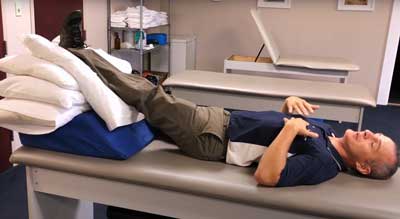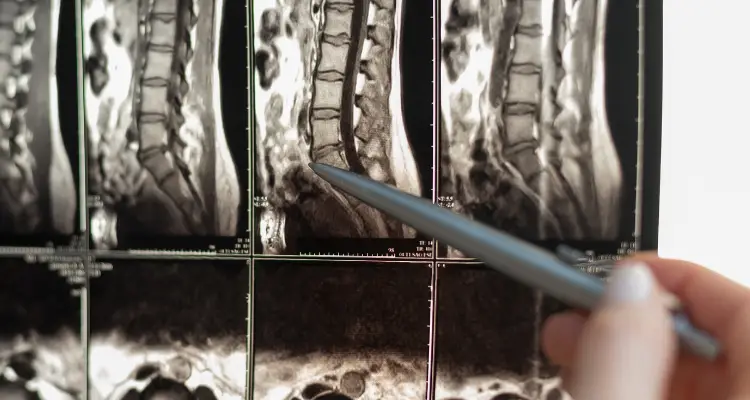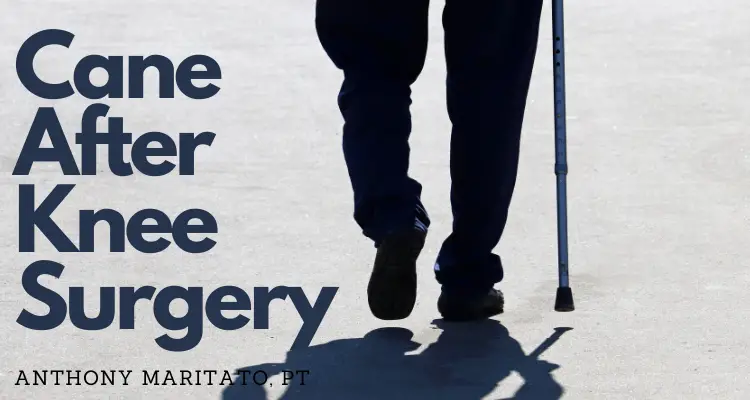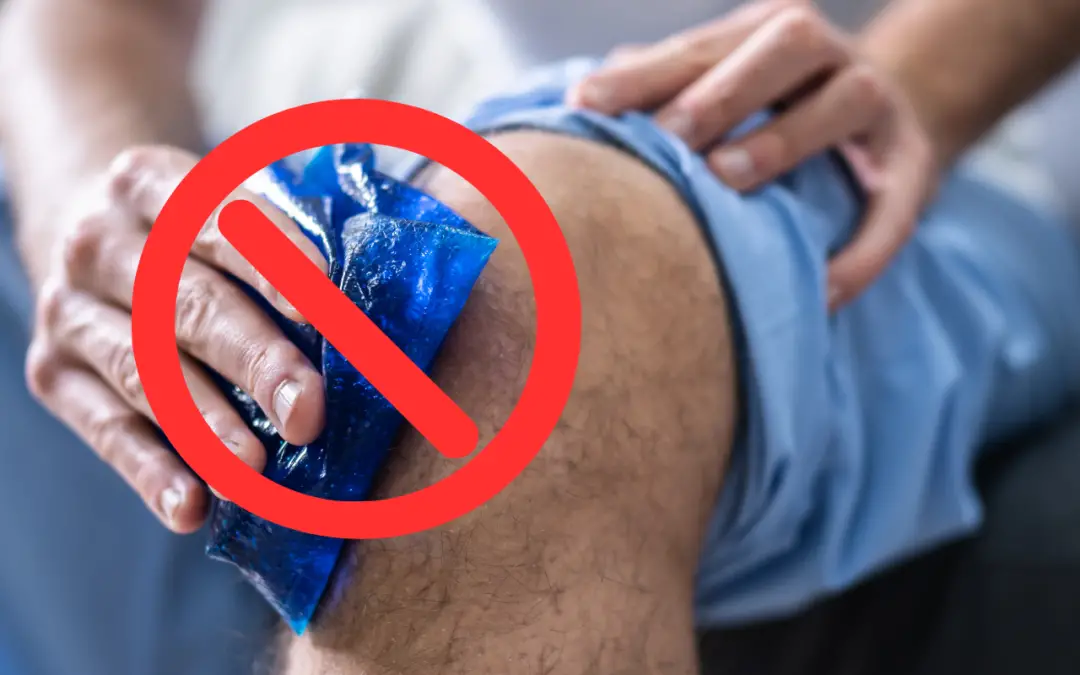What causes sciatica after knee replacement?
Occasionally after a total knee replacement, my patients reports signs and symptoms consistent with sciatica. My patients describe a sharp, burning hot poker stabbing them in the buttock with searing pain that runs down the lateral back of the leg to the knee and sometimes to the foot.
I attribute this condition to changes in the body alignment after knee replacement. Before surgery many patients will experience varus or valgus knee deformities. After knee replacement surgery the knee now becomes straight and the hip, pelvis, and lumbar spine need to adjust. This adjustment in the lumbar spine sometimes results in exacerbation of lumbar pathology resulting in symptoms associated with sciatica.
Introduction to Sciatica After Knee Replacement
Undergoing a knee replacement surgery can be a life-changing decision, offering the promise of improved mobility and reduced pain. However, post-surgical complications can sometimes arise, one of which is sciatica. This condition, characterized by pain radiating along the path of the sciatic nerve, can be a surprising and challenging outcome for some patients after knee replacement.
Sciatica after knee replacement is not a common occurrence, but it’s not unheard of either. It’s a condition that can cause significant discomfort and can potentially affect your recovery timeline. Understanding what sciatica is, why it might occur after knee replacement, and how it can be managed is crucial for anyone going through this journey.
Sciatica is a term used to describe symptoms of pain, numbness, and/or weakness that radiate along the sciatic nerve from the lower back to the buttocks and leg. The sciatic nerve is the longest and widest nerve in the human body, and it controls many of the muscles in your lower legs and provides feeling to your thighs, legs, and feet.
After a knee replacement surgery, changes in the way you move and carry your body can put additional stress on your lower back, potentially leading to sciatica. It’s also possible that prolonged sitting after surgery, a common scenario during the initial recovery phase, can contribute to the onset of this condition.
It’s important to note that while sciatica can be quite painful, it’s typically a temporary condition. With the right approach to treatment and management, most people can recover from sciatica after knee replacement and return to their normal activities. In some cases, specific exercises and physical therapy can be particularly helpful, which we will explore in more detail in the following sections.
As you navigate your recovery journey, remember that every individual’s experience is unique. What works for one person may not work for another. It’s crucial to communicate openly with your healthcare providers about your symptoms and concerns. They can provide personalized advice and treatment options based on your specific situation.
In the next section, we’ll delve deeper into the causes of sciatica after knee replacement, helping you understand why this condition might occur and what factors may increase your risk. Stay tuned for more insights on this important topic.

Causes of Sciatica After Knee Replacement
Understanding the causes of sciatica after a knee replacement surgery can be complex, as it often involves a combination of factors. These can include changes in body mechanics, prolonged periods of sitting, and alterations in the hip, knee, and ankle joints.
One of the primary causes of sciatica after knee replacement is altered body mechanics. After surgery, your body needs to adjust to the new knee joint, which can lead to changes in the way you walk and move. This can put additional stress on your lower back, potentially leading to irritation or compression of the sciatic nerve.
Prolonged sitting after surgery is another common cause. During the initial recovery phase, you may find yourself sitting or lying down for extended periods. This lack of movement can lead to stiffness in the lower back, which can exacerbate sciatica symptoms.
Changes in the hip, knee, and ankle joints can also contribute to sciatica after knee replacement. The surgery itself can lead to changes in these joints, as they adjust to the new knee joint. This can alter the alignment of your lower body, potentially leading to sciatica.
It’s also worth noting that pre-existing conditions can increase the risk of developing sciatica after knee replacement. For example, if you have a history of lower back pain or sciatica, you may be more likely to experience these symptoms after surgery.
While these are some of the most common causes, it’s important to remember that every individual’s situation is unique. Other factors, such as your overall health, age, and physical fitness, can also play a role in your risk of developing sciatica after knee replacement.
Understanding these causes is the first step towards effective management and treatment. In the next section, we’ll explore the symptoms and diagnosis of sciatica after knee replacement, providing you with the knowledge you need to identify this condition and seek appropriate treatment.
Symptoms and Diagnosis of Sciatica After Knee Replacement
Sciatica after a knee replacement surgery can present a range of symptoms. The most common symptom is pain that radiates from your lower (lumbar) spine to your buttock and down the back of your leg. This discomfort can range from a mild ache to a sharp, burning sensation or excruciating pain. Sometimes it can feel like a jolt or electric shock.
Other common symptoms of sciatica include numbness, tingling, or muscle weakness in the affected leg or foot. You might have pain in one part of your leg and numbness in another part. Typically, these symptoms occur on one side of your body.
Sciatica symptoms can be triggered by sitting for a long time, or by a sudden movement such as a cough or sneeze. Physical activity might aggravate the pain, but walking and mild stretching can alleviate it.
Diagnosing sciatica after knee replacement involves a thorough examination by your healthcare provider. They will ask about your symptoms and medical history, including details about your knee replacement surgery. They may also perform a physical examination to check your muscle strength and reflexes. In some cases, imaging tests such as X-rays or MRIs may be used to further investigate the cause of your symptoms.
It’s important to seek medical attention if you’re experiencing symptoms of sciatica after knee replacement. While it’s a common condition that can often be managed with conservative treatments, it can also be a sign of a more serious issue that requires medical intervention. In the next section, we’ll explore the treatment and management options for sciatica after knee replacement, providing you with the information you need to navigate this condition effectively.
Treatment and Management of Sciatica After Knee Replacement
Managing sciatica after a knee replacement surgery typically involves a combination of self-care measures and medical treatments. The goal is to reduce pain and inflammation, improve mobility, and prevent future episodes.
Self-care measures are often the first step in managing sciatica symptoms. This can include over-the-counter pain relievers, hot or cold packs, and gentle exercises to stretch and strengthen the lower back. Regular movement can help reduce inflammation and improve your overall comfort.
Physical therapy can be a crucial part of managing sciatica after knee replacement. A physical therapist can provide exercises to strengthen your back, improve your flexibility, and improve your posture. They can also provide advice on modifying your activities to avoid putting extra pressure on your sciatic nerve.
In some cases, prescription medications may be recommended to manage severe pain. These can include stronger pain relievers, muscle relaxants, or medications to reduce nerve pain. It’s important to use these medications as directed by your healthcare provider, and to discuss any potential side effects or interactions with other medications you’re taking.
If conservative treatments aren’t effective, your healthcare provider may recommend other options. This could include injections of corticosteroids to reduce inflammation around the nerve, or in rare cases, surgery to address the underlying cause of the sciatica.
Remember, the most effective treatment for sciatica after knee replacement will depend on your individual circumstances, including the severity of your symptoms, your overall health, and your personal preferences. It’s important to discuss all your treatment options with your healthcare provider to find the approach that works best for you.
In the next section, we’ll explore prevention strategies and exercises for sciatica after knee replacement, providing you with practical tips to help you avoid this condition in the future.
Prevention and Exercises for Sciatica After Knee Replacement
Preventing sciatica after a knee replacement surgery involves a combination of lifestyle modifications and specific exercises. The goal is to maintain good posture, strengthen the muscles that support your back, and avoid activities that put excessive strain on your sciatic nerve.
Maintaining good posture is crucial, both when you’re sitting and when you’re moving around. When sitting, choose a seat with good lower back support, armrests, and a swivel base. Keep your knees and hips level and keep your feet flat on the floor. During your recovery from knee replacement, you may spend a lot of time sitting, so it’s important to get up and move around every hour.
Regular exercise is also key to preventing sciatica. Strengthening the muscles that support your lower back can help prevent sciatica symptoms. This can include exercises to strengthen your core, as well as specific exercises to improve flexibility and strength in your lower back.
Physical therapy can be particularly beneficial in this regard. A physical therapist can provide a personalized exercise program that takes into account your overall health, the specifics of your knee replacement surgery, and any other factors that might affect your risk of sciatica.
It’s also important to be mindful of your movements during everyday activities. Avoid heavy lifting when possible, and when you do need to lift something heavy, make sure to lift properly, using your legs rather than your back. Be mindful of your body mechanics when you’re moving around, especially when you’re bending or twisting your body.
Remember, prevention is always better than cure. Taking steps to prevent sciatica can help you avoid the discomfort and disruption that this condition can cause. However, if you do experience symptoms of sciatica after knee replacement, don’t hesitate to seek medical advice. With the right treatment and management, you can effectively manage this condition and get back to your normal activities.
Key Takeaways
| 1. Sciatica after knee replacement is not common, but it can occur due to altered body mechanics, prolonged sitting, and changes in the hip, knee, and ankle joints. |
| 2. Symptoms of sciatica include pain that radiates from the lower spine to the buttock and down the back of the leg, numbness, tingling, or muscle weakness in the affected leg or foot. |
| 3. Treatment for sciatica after knee replacement often involves self-care measures, physical therapy, and sometimes medications or other medical treatments. |
| 4. Preventing sciatica involves maintaining good posture, regular exercise to strengthen the muscles that support your back, and being mindful of your movements during everyday activities. |
| 5. If you experience symptoms of sciatica after knee replacement, seek medical advice. With the right treatment and management, you can effectively manage this condition and return to your normal activities. |

Anthony Maritato, PT
Physical Therapist
Anthony Maritato, PT has been a licensed physical therapist and private practice owner since 2006. Ohio license #PT011602.
Anthony has been passionate about helping patients recover from total knee replacement surgery as well as rotator cuff repair surgery.

Managing Pain After Total Knee Replacement
Introduction to Managing Pain After a Knee Replacement Undergoing a total knee replacement is a significant medical procedure that can dramatically improve your quality of life. However, the journey to full recovery involves navigating through various challenges, one...

Total Knee Replacement Pain at Night
What to Expect Explore our comprehensive guide on managing 'Total Knee Replacement Pain at Night.' Learn about the causes of night pain, effective pain management strategies, best sleeping positions, and more. This article provides practical advice to help individuals...

Overview of Spinal Stenosis
Table of Contents What is spinal stenosis What are the symptoms of spinal stenosis How is spinal stenosis diagnosed What are the different types of treatment for spinal stenosis Where to find more information 1. What is spinal stenosis Spinal stenosis is a condition...

Spinal Stenosis Exercises to Avoid: During Knee Replacement Recovery
Spinal stenosis is relatively common among adults having a total knee replacement surgery. While spinal stenosis doesn't always impact total knee replacement recovery, when it does, it can be frustrating. Before I specialized in treating patients after a total knee...

Ride a Peloton After Knee Replacement Surgery
Table of Contents When can I return to riding my Peloton bike at home after a total knee replacement? Is a Peloton bike good physical therapy after a total knee replacement surgery? Will riding my Peloton too much wear out my new knee? How often should I ride my...

How to Use a Cane After Knee Surgery
Table of Contents Understanding the Purpose of Using a Cane after Knee Surgery How to Properly Use a Cane after Knee Surgery Common Mistakes to Avoid When Using a Cane Transitioning from a Walker to a Cane: When and How? Understanding the Purpose of Using a Cane after...

Ice Machine for Knee Surgery
Table of Contents Benefits of Using an Ice Machine After Knee Surgery How an Ice Machine Works Top Ice Machines for Knee Surgery Recovery How to Use an Ice Machine After Knee Surgery Where to Buy an Ice Machine and What to Consider Benefits of Using an Ice Machine...

Walking Your Dog After Knee Replacement Surgery: A Timeline for Recovery
Table of Contents Introduction Walking Your Dog After Knee Replacement Safety Considerations and Precautions Conclusion Introduction Hello, fellow dog lovers and knee replacement warriors! I'm Anthony Maritato, a licensed physical therapist specializing in post-total...

Top 5 Mistakes After Knee Replacement
In this article I will share my experience as a physical therapist and personal trainer of more than 22 years treating patients after total knee replacement surgery. I have seen patients who made every mistake possible and still had a great outcome following this...

